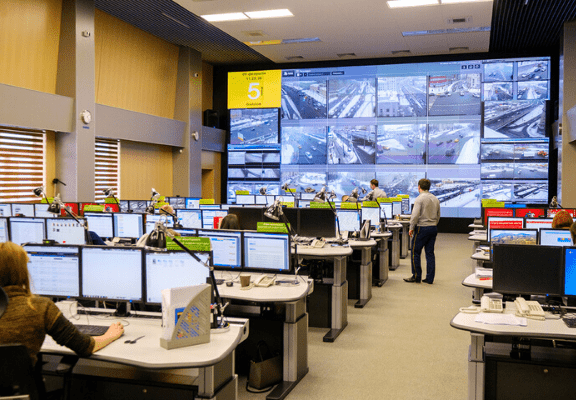
by: Marzo Monserrate
SVP for Sales and Marketing
We usually spend our daily lives commuting or walking to and from public areas to go to work, home, or meet-up with colleagues and clients. Many of us even travel long distances that take one to four-hour drive from work to home or vice versa. However, we cannot always guarantee our safety since unforeseen events, crimes, and disasters continue to make headlines and become more prevalent across all locations.
On Road Mishaps
Road accidents have been a growing trend for 10 years since 2005 in the Philippines. In Metro Manila alone, the figures climbed from 63,072 incidents in 2007 to 116,906 in 2018. According to the Department of Health (DoH), road accidents are one of the leading causes of death among children, surpassing other deadly diseases.
In the present data showed by PNP-HPG (Philippine National Police-Highway Patrol Group), road crashes caused by human factor from January to September 2019 was 8,809. Whereas 389 were due to mechanical defect, 240 on account of poor road conditions, and other factors such as animal crossing and calamities were 281.
The causes of road accidents include bad overtaking, over-speeding, drunk driving, improper turning, and jaywalking.
Crime Situation in the Philippines Declined
Crime has also been a pressing issue in the Philippines over the years, including Metro Manila by far tagged as the most crime-infested since it is the biggest and busiest region in the country.
Nonetheless, records from the PNP reported a downtrend in crime figures with a total of 38, 284 in May 2019 compared to the 42,527 volume for the same period last year. Data further revealed a 22.6% decrease in index crimes, including murder, homicide, physical injury, rape, robbery, theft, and carnapping―from 7,421 in May last year to 5,744 in May 2019.
Moreover, non-index crimes declined from 35,106 to 32,540. Non-index crimes include reckless imprudence resulting in homicide and physical injury, and other unlawful acts, usually covered by special laws.
Philippines: A Spot for Natural Calamities
Having the virtue of its geographic state and location along the typhoon-belt and Ring of Fire, the Philippines is highly prone to natural disasters such as tropical cyclones, earthquakes, floods, and volcanic eruptions. On average, 20 tropical cyclones enter the Philippines―few of this occurrence leads to flooding in some areas―while a series of powerful quakes and aftershocks shook the country this year and frequently struck provinces in Mindanao since October 2019.
Likewise, human-induced disasters caused by actions or activities of people such as fire, oil spills, gas leak, chemical accidents, and the presence of armed rebel groups transpire in some cities or regions in the Philippines.
Casualties including death and injury of people and damage to property and structures are the certainties all government institutions have to address and resolve every time disasters occur in the Philippines.
Command Center in a City Government Facility
With the immense amount of critical events happening every day, people eagerly seek their protection, particularly in public places. Government and non-government institutions in the Philippines are committed to finding ways and putting all sorts of measures and systems to prevent threats and make the community safer.
One of the security measures a few City Governments effectively carried out is by placing a Command Center in their facilities. Often referred to as "operational center" or "war room", a command center is a centralized space that gives an abstract view of on-going activities and monitors critical operations. Viewed as an intensive and critical working environment, command centers require effective tools, as well as complex and seamless coordination of personnel to manage all operations under several circumstances 24/7. Various institutions including military, government, and private enterprises use command centers in their facilities.
One of the few command center projects we worked on recently is the Cabanatuan City's Unified Command Center, situated in the City Government Office of Cabanatuan, Nueva Ecija. Geared towards the safety and security of their community, the facility enables them to be aware of situations and detect uncertainties that may arise at any time, observed over multiple and integrated audio-visual formats.

Furthermore, the command center gives them the power to mitigate threats and immediately respond to crises or incidents whether it's a traffic mishap, tracking a fugitive, or natural calamities―utilizing the state-of-the-art technologies for more dynamic traffic management, innovative peace and order, efficient disaster risk reduction and management.
It is imperative in this day and age that authorities need to step up and leverage the ever-growing technological advancements where heightened security is needed, as well as the protection of the citizens.
---
Marzo Monserrate is a graduate of Bachelor of Science in Business Administration at the University of Santo Thomas. He joined AMTI as a Business Manager in January 1997, and is currently the SVP and GM for Sales and Marketing.
---
Audio-visual and IT Integration (AVIT) solutions offer a wide range of AV communication systems for business communication needs.
AMTI provided cutting-edge technologies for a sophisticated command center with AV system integration, as well as data center infrastructure for this project - from design planning, installation to testing and commissioning of the equipment. (Watch the video below)

